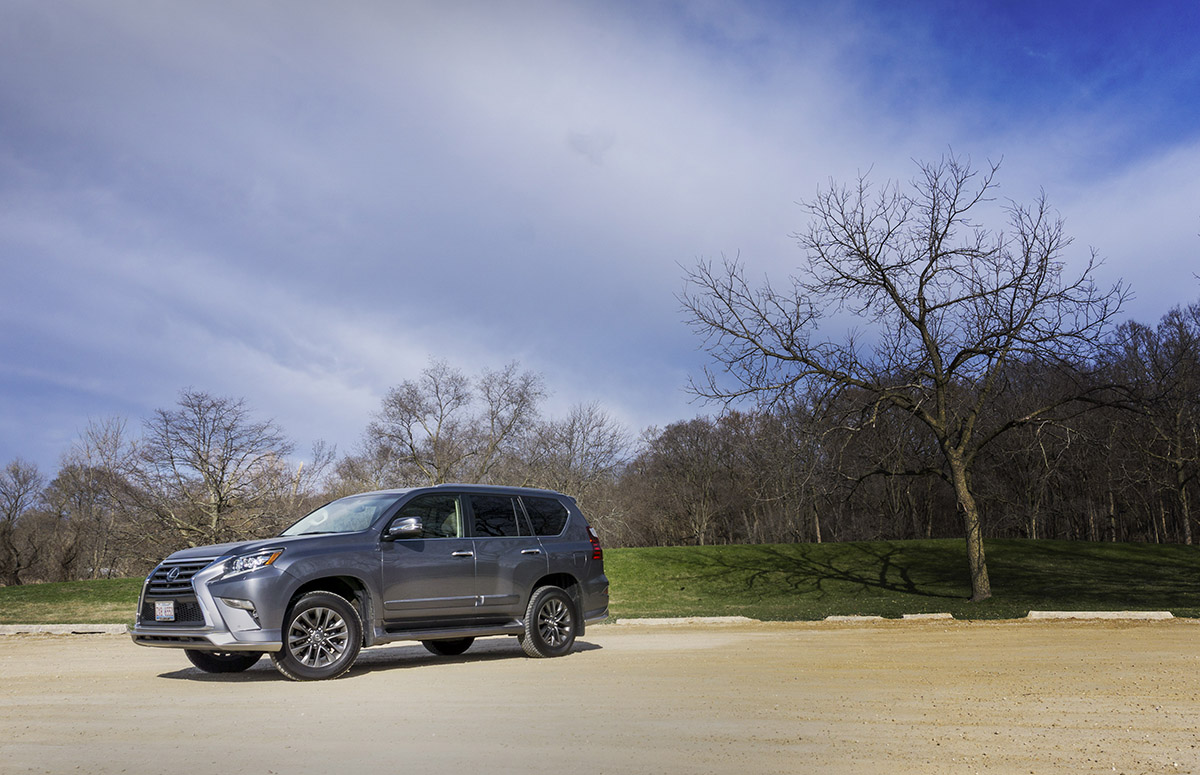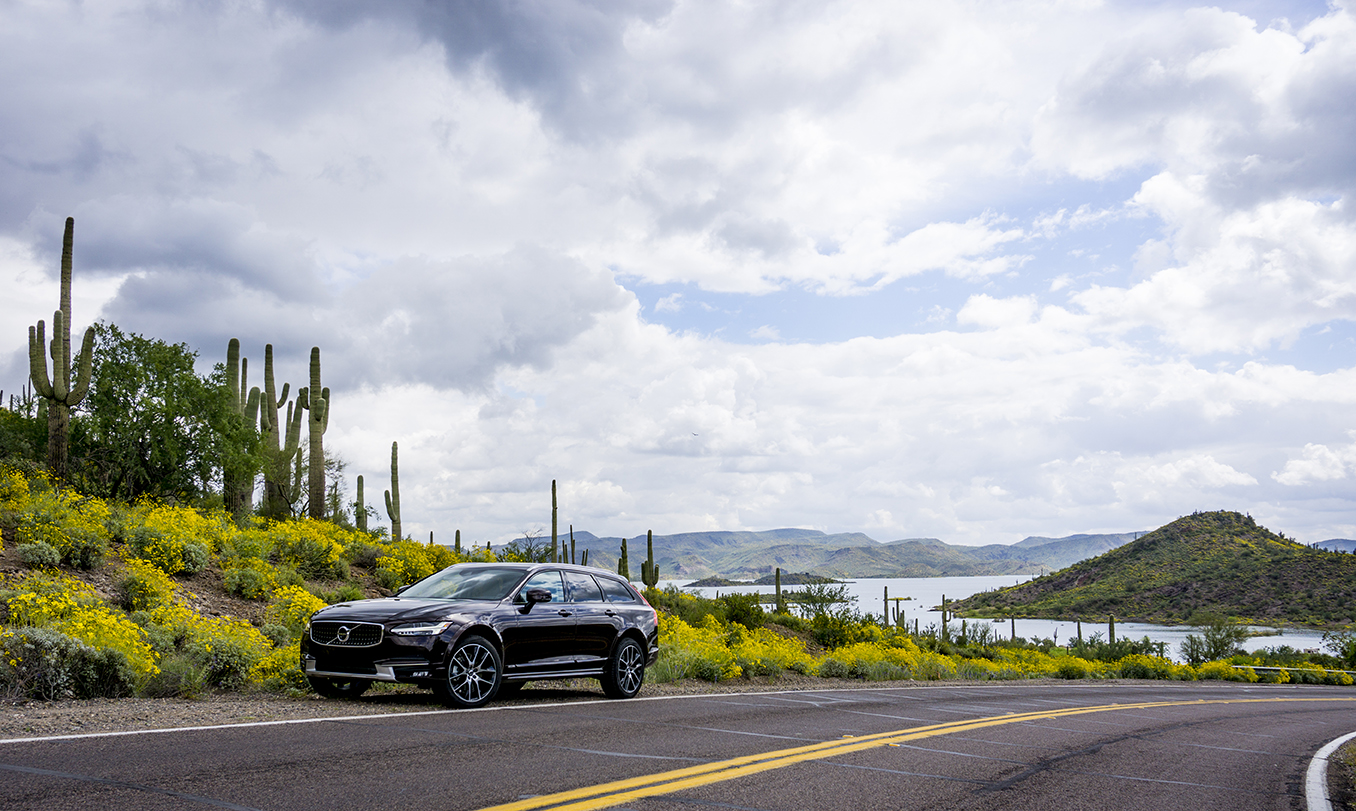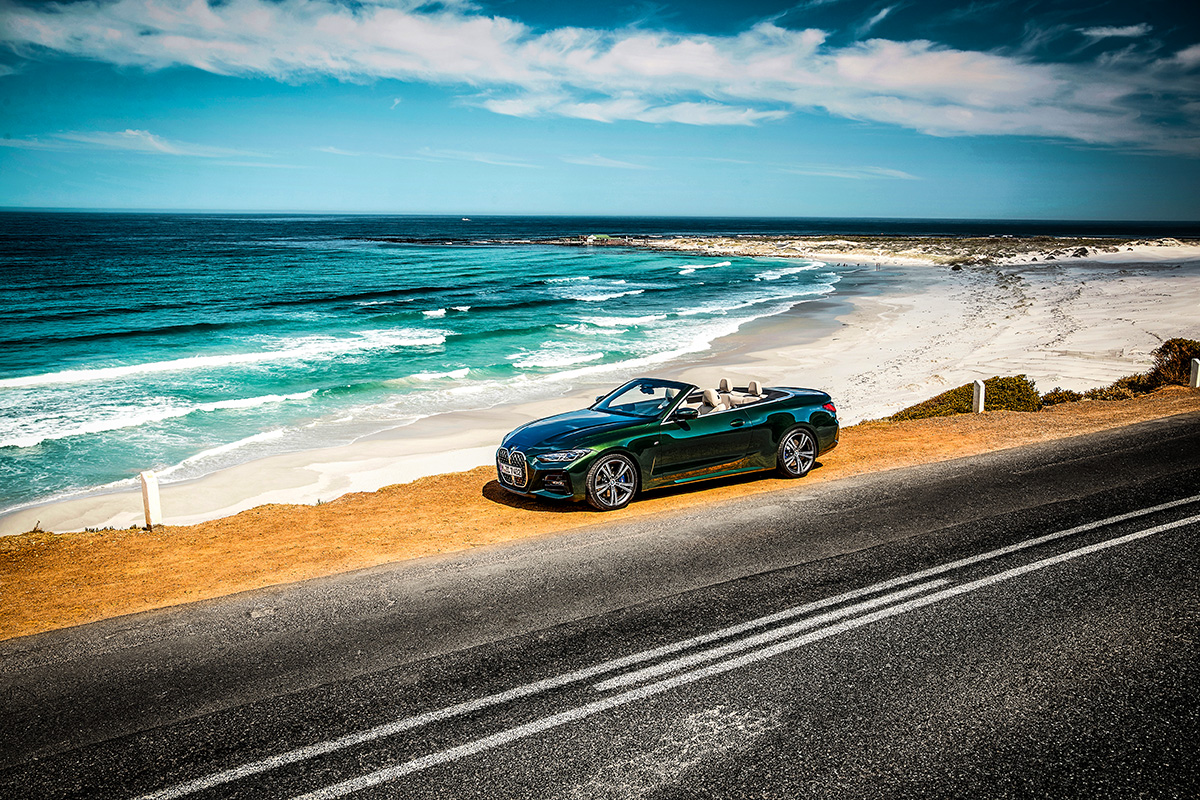Driven: 2018 Mitsubishi Eclipse Cross SEL Touring – Is good enough, good enough?
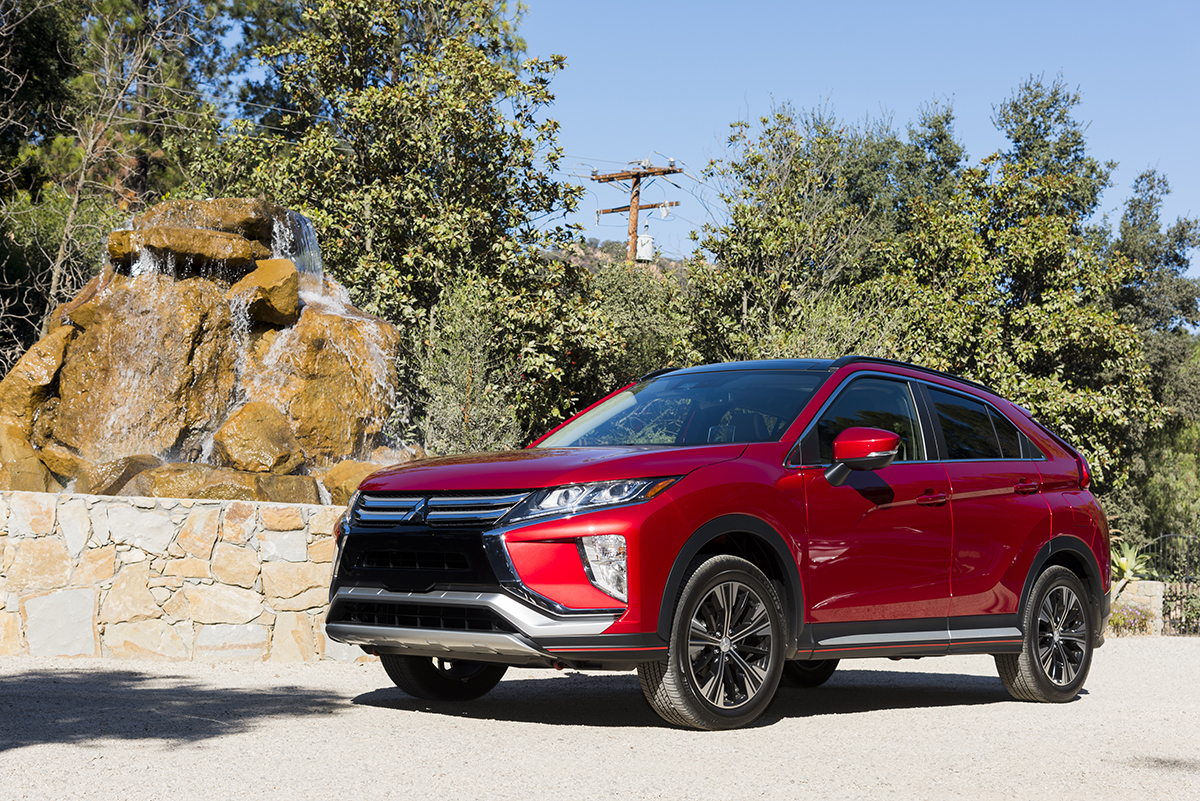
The automotive world is a very crowded place right now and as we go through a slight retrenchment in the U.S. with sales projected to slide a few percent in 2018, it’s going to get even more so. On top of that reliability and durability are not the big differentiators they were in years past. There are a lot of very competent vehicles on the road today, especially in the category in which Mitsubishi has launched its newest vehicle, the Eclipse Cross.
The competition reads like a murderer’s row of small crossovers: Toyota RAV4, Honda CRV, Nissan Rogue, Chevy Equinox, Ford Escape, Hyundai Tucson, and more. There’s not a lot of room to elbow here. Compare all the mainstream compact crossovers spec for spec and feature for feature and you’ll see very little difference. Performance is not the name of the game here. Room for your family, functionality, and efficiency are. And of course, so it that squishy, weasel word that is a favorite of automotive marketers: value.
Behind the wheel of a Mitsubishi Eclipse Cross
With little equity left in a brand that once sported hot cars like the Eclipse coupe and Evo, Mitsubishi is hanging its hat on value and style, hoping those two assets can carry this product and the brand back into relevance while they remake their entire lineup with help from their partners at the Nissan Renault Alliance.
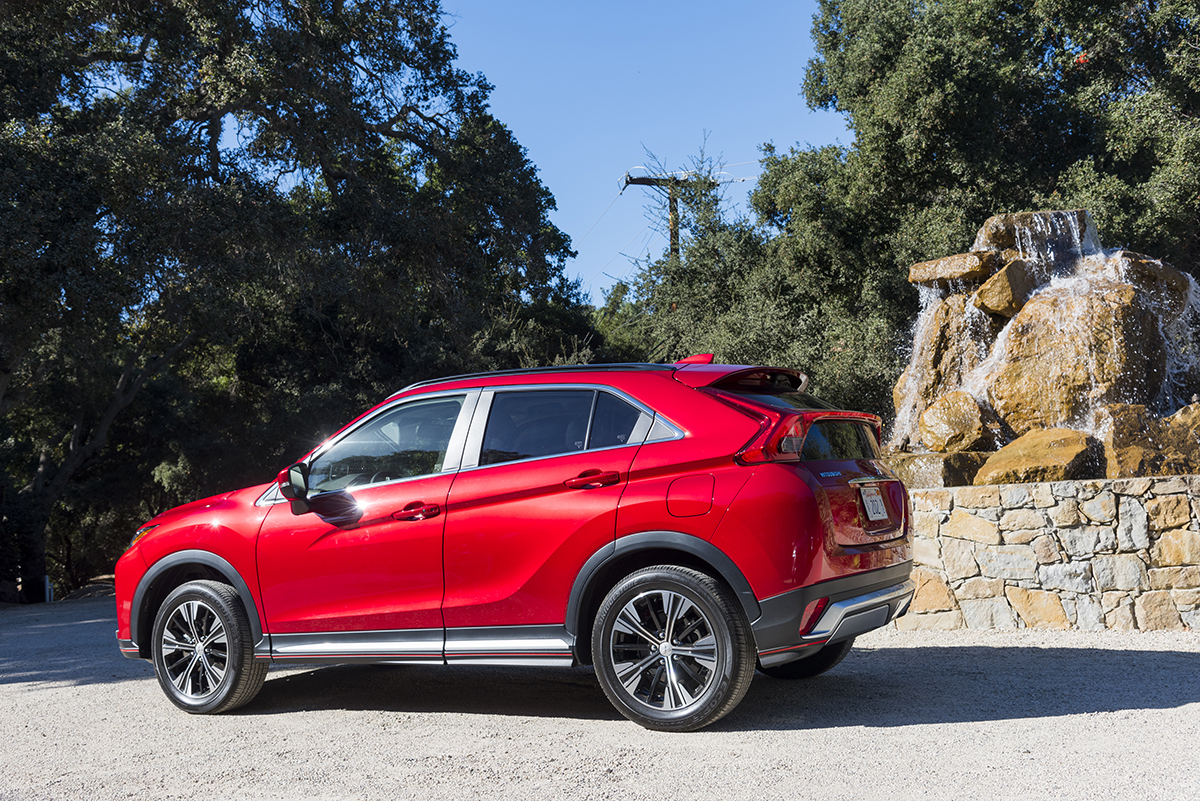
What the Eclipse Cross has is looks. This is a well-designed vehicle inside and out. While it follows some of the creased and folded conventions of the category the Eclipse Cross stands out from the offerings of Toyota and Honda, striking a nice balance between unique and familiar. The Mitsubishi front end bears a slight resemblance to the Toyota/Lexus family but isn’t carried to the same extremes. The head and fog lamps are set well out to the edges making the Eclipse Cross feel wider than it is. A character line runs from just behind the front wheel into the taillamp at a rakish angle, adding to the crossover’s purposeful look. My SEL Touring was equipped with faux carbon fiber trim pieces in black with sporty red striping along the rocker panels and front. I’m not big fans of faux material and would rather have just seen matte black here, but it’s not bad. Another interesting choice – and not one I’m sure we like is the taillamp splitting the rear window. It looks fine, but in practice does compromise rear visibility. The 18-inch alloy wheels complete the look and add to the Eclipse Cross’s sporting promise.
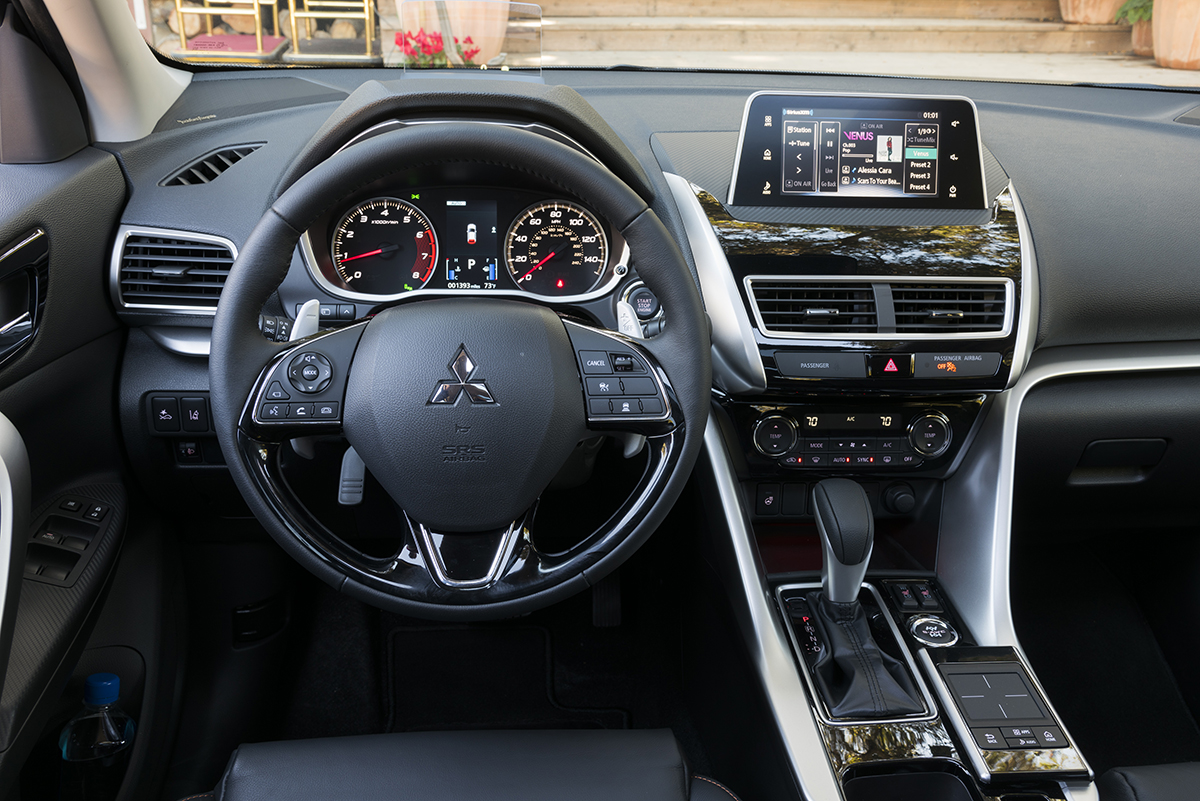
The interior is clean, uncluttered, and comfortable. A large speedometer and tach dominate the instrument panel, with a small, customizable TFT display in between. Above the instrument panel, a four-color head up display is projected into a small plastic screen that flips down when not in use. To the right, a 7-inch touchscreen rests atop the center console. Material choice is sound, if not spectacular and the fit and finish, even on our preproduction test cars was thoroughly acceptable. I appreciate the tactile buttons for the HVAC controls but would have preferred real volume and tuning knobs for the radio as opposed to touchscreen control for those functions. There are several blank switch and button covers on the dash and steering wheel, that just leaves you with the feeling something has been left out.
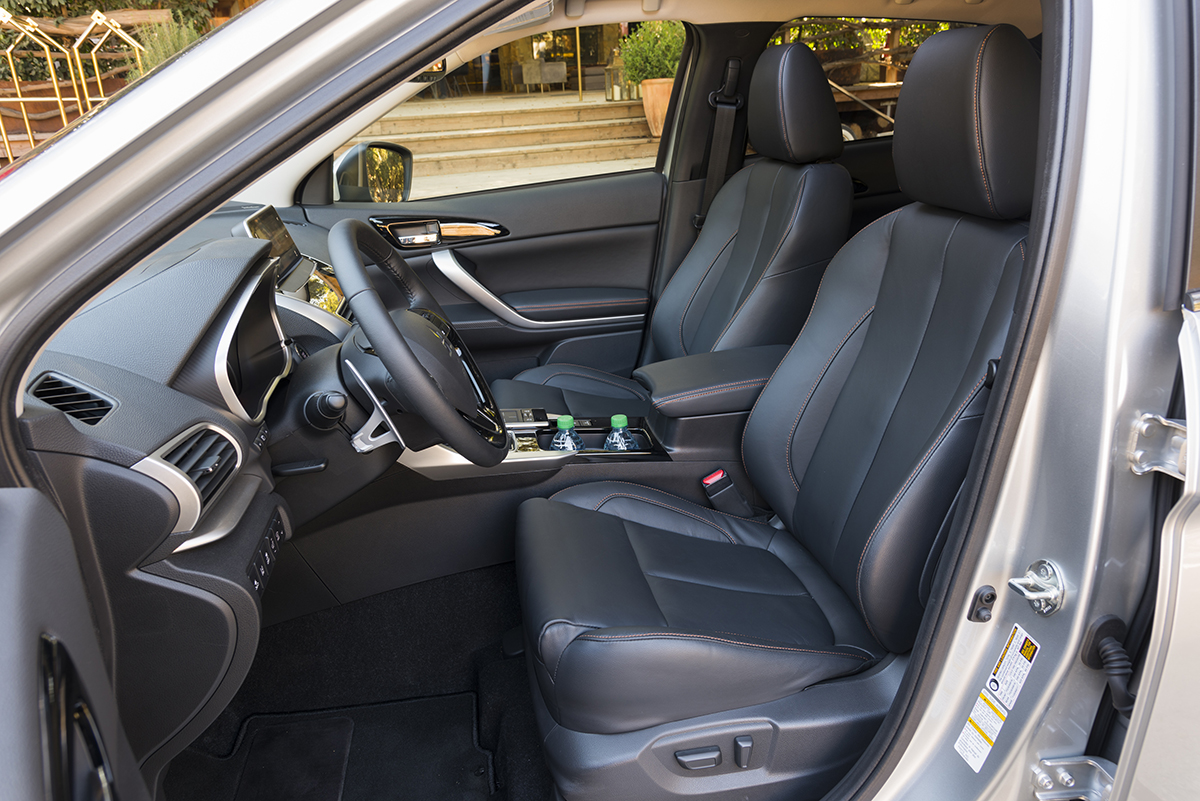
The leather-wrapped steering wheel is very comfortable, sized just right and for those who live where jack frost nips, can be ordered with heat to keep your fingers toasty. Supportive and comfortable leather seats are standard in the SEL. As my host said, in Mitsubishi nomenclature “L stands for leather.” Heated seats are standard up front and optional in the rear. Speaking of the rear seats, they offer plenty of room for six-footers even if full-size adults are sitting up front. And, though there are three seat belts back there, I wouldn’t want to be stuck between two 200 pounders. It is a compact crossover after all. The rear seats slide and recline which is a nice touch. They also offer the convenience 60/40 split seat backs that unfortunately don’t fold completely flat.
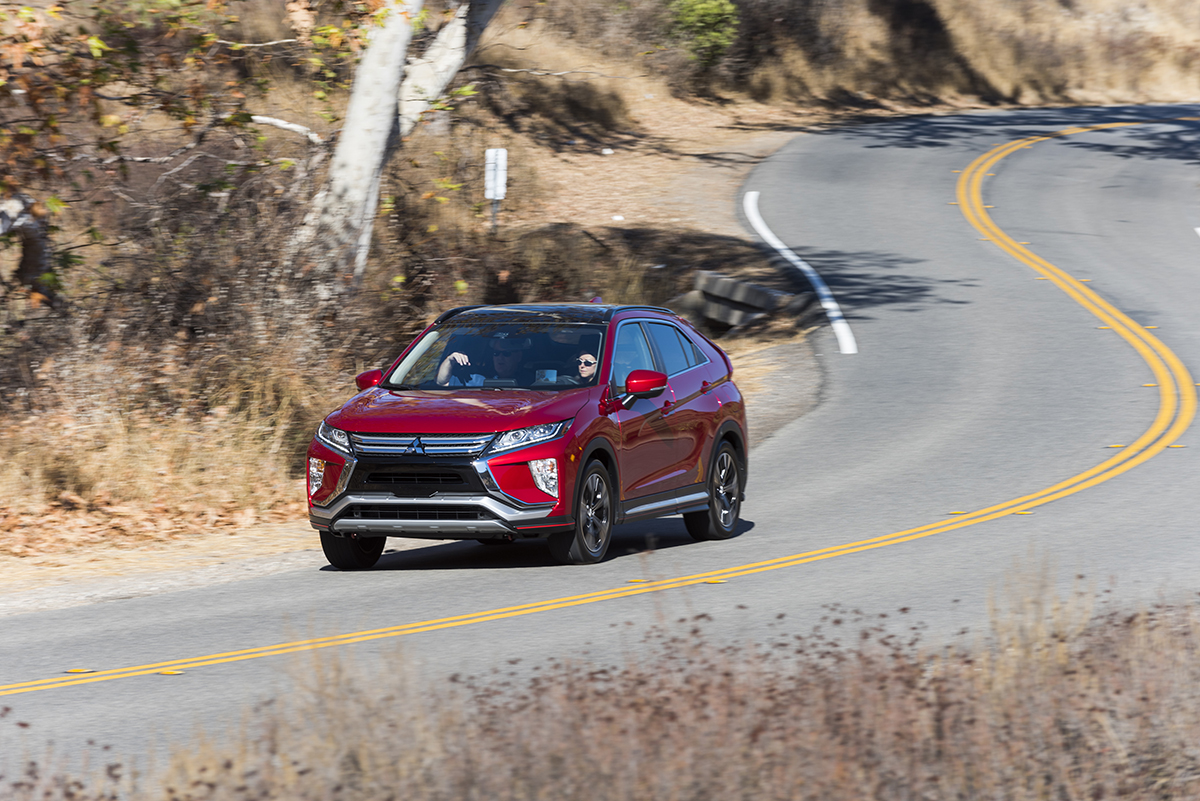
The Eclipse Cross features Mitsubishi’s new turbocharged, 1.5 liter 4-cylinder engine. This is one willing engine. The numbers are solid (152 hp at 5,500 RPM and a nice flat peak torque of 184 lb.-ft. from 2,000 to 5,000 RPM). While you won’t confuse this for a Tesla in Ludicrous mode, it feels quick off the line. The all-new engine features a number of technical bits like direct injection and sodium-filled exhaust valves which aid performance and drivability. With a rating of 1,500 pounds, the Eclipse Cross can tow a small trailer so you can bring your jet ski or snowmachine along with you on your adventures.
The CVT, however, doesn’t do the engine any favors. Even though the transmission has a sport mode with eight simulated gear shifts via steering wheel mounted paddle shifters, it still has a bit of that rubber band feel that plagues all CVTs. A conventional 6-speed automatic or a DCT like Kia is using in the Niro would have greatly improved the driving experience and allowed this engine shine. As it is, the CVT dulls its edge and that’s really too bad.
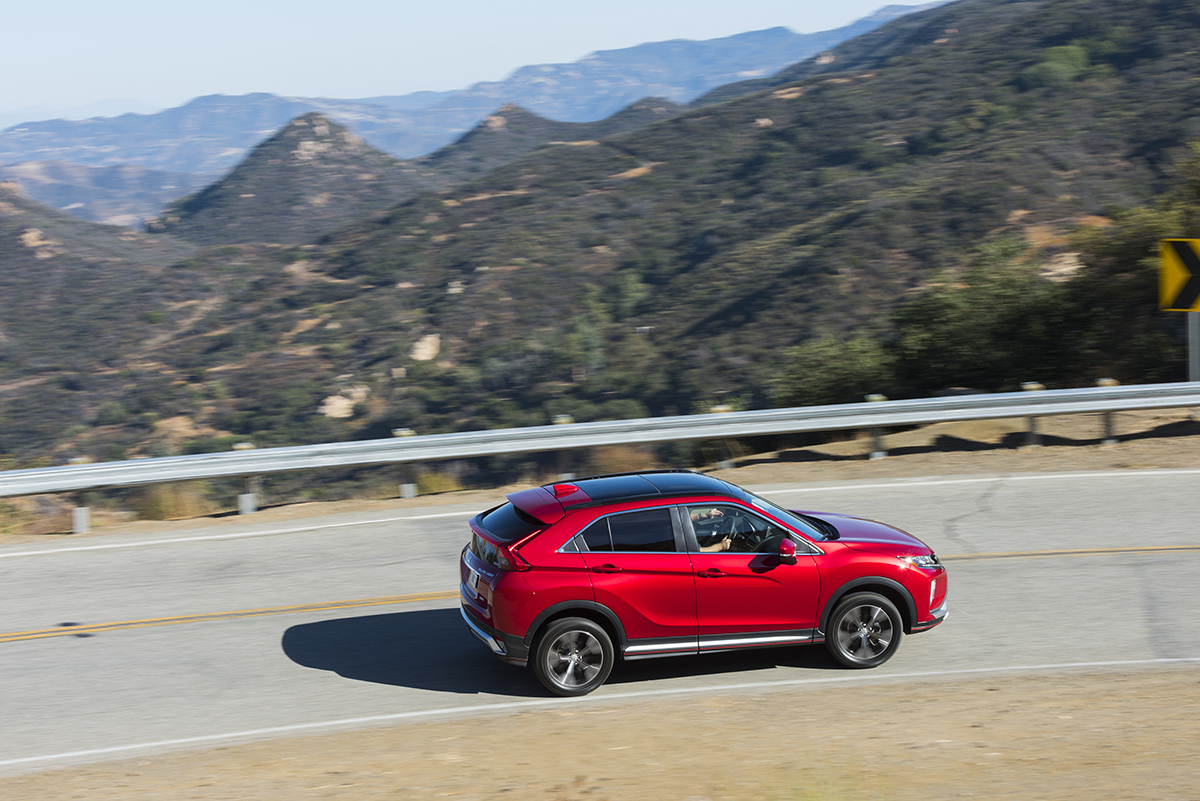
The ride and handling on the other hand were pleasantly surprising. Again, you won’t confuse this for a low-CG coupe, but even with its high-waist and the bulk that comes with all that extra sheet metal, the Eclipse Cross gets around corners with confidence. Turn in is direct and predictable. The electric power assist steering transfers enough information to the driver’s hands. It’s light and quick with just 2.9 turns lock to lock and a very nimble turning radius of 34.8 feet. Combined with Mitsubishi’s Super All-Wheel Control the Eclipse Cross dug confidently into the corners on the famous Mulholland Highway. Even pushing it so hard the tires were howling in protest, the little ute held its line, never feeling like I was anywhere near the edge of the envelope. S-AWC uses all-wheel drive, active stability control, anti-lock brakes, active yaw control, and a series of sensors to monitor the situation put the power to the appropriate wheels, keeping things from getting wonky if you go into a hairpin a little hot.
The S-AWC system also has three drive modes, – Auto, Snow, and Gravel – to optimize the traction for specific road conditions. We didn’t get to test out this system on any surface other than pavement and a quick donut on a gravel turnaround, but given the ubiquity of these on almost every AWD system from other manufacturers, we believe the Mitsubishi folks when they tell us it makes life easier when you encounter the aforementioned road conditions.
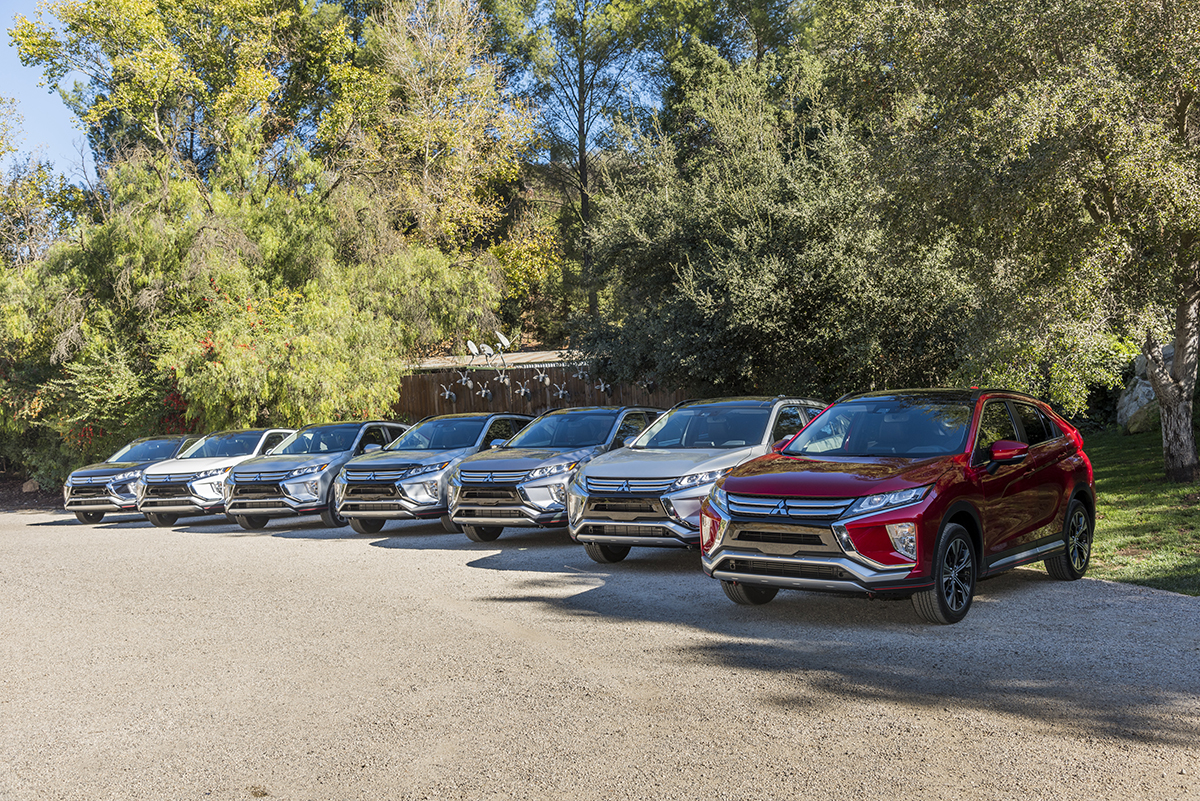
The Eclipse Cross comes with a fairly comprehensive suite of safety features standard, but you have to move up to the SE and SEL to get blind spot warning with rear cross traffic alert, and lane keep assist. You can also add a safety technology package to the SEL that includes auto high beams, forward collision mitigation, lane departure warning, and adaptive cruise. Our tester had all the bells and whistles and they worked well. My co-driver even decided to put the forward collision mitigation to the test, coming in a little hot (on purpose he assured me) to a stoplight and the Eclipse Cross clamped down on its 11.6-inch ventilated disc brakes with vigor.
So the upshot is this. The Eclipse Cross is sporty looking, incredibly well equipped for the money, has a really nice motor, and drives as a mainstream compact crossover should. Given that this is the largest segment in the automotive landscape now (and still growing) there’s certainly a place for it on those shopping a Rogue, CR-V, RAV4, or Equinox who want to keep a few thousand extra bucks in their pockets. Is it best in class? No. Is it a viable option for less cash? Definitely.
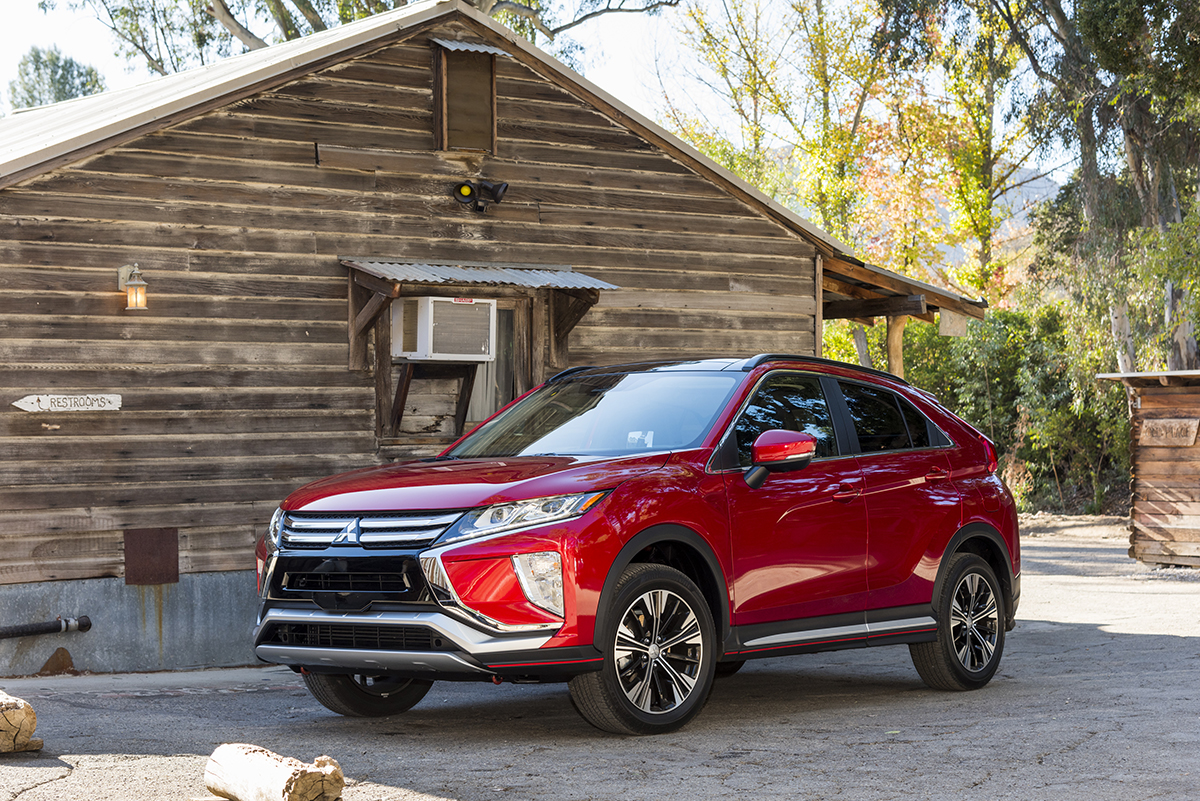
2018 Mitsubishi Eclipse Cross SEL Touring
Four-door, five-passenger compact crossover
Base Price (USD): $23,295
Price as Tested (USD): $30,395
Engine: 1.5-liter turbo 4
Horsepower: 152 @ 5,500
Torque (lb-ft.): 184 @ 2,000
Transmission: 8-speed CVT with sport mode
Drive Configuration: AWD (FWD only available on base ES model)
Curb Weight (lb): 3,516
0-to-60 Time: 9.0 seconds
Top Speed: 120 mph
EPA MPG: 25 city, 26 highway, 25 combined
While the manufacturer paid for travel expenses and provided the vehicles for this story, the opinions and recommendations in this story are 100% ours.

